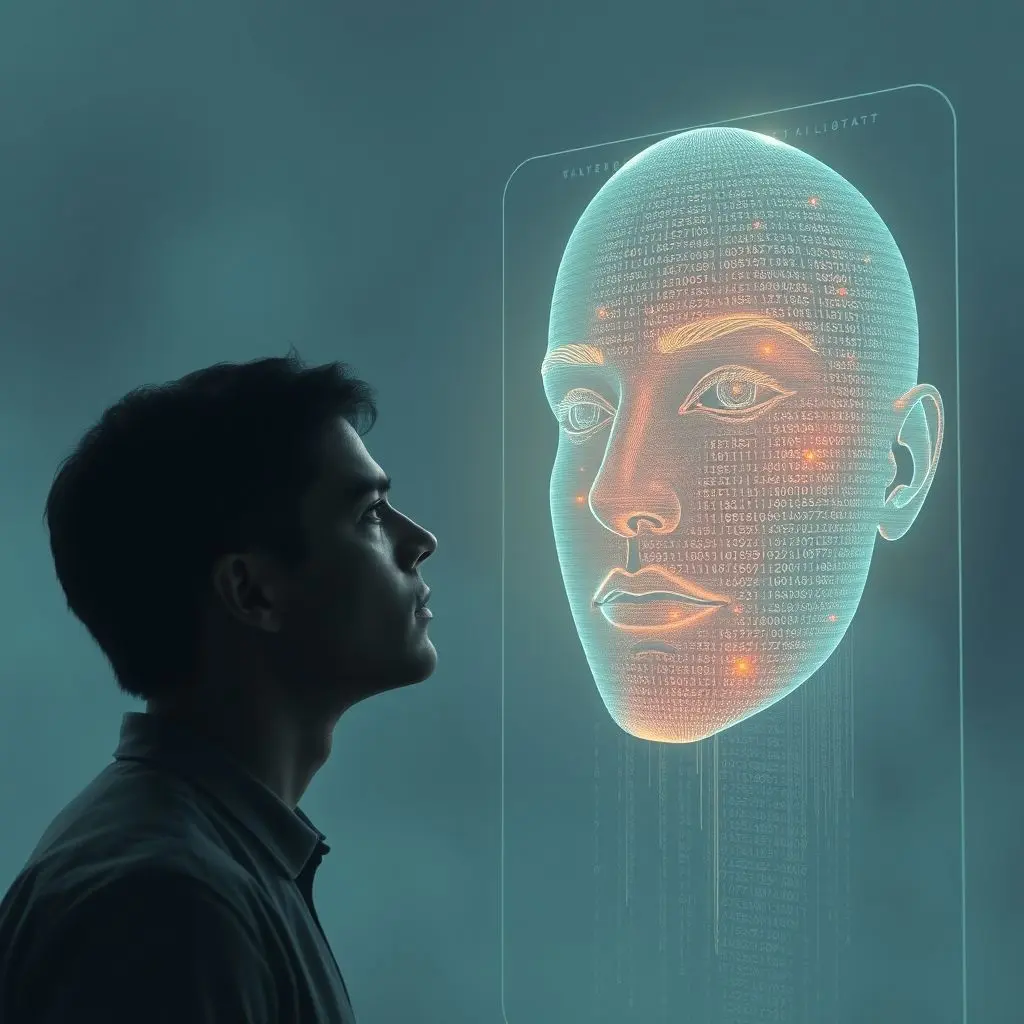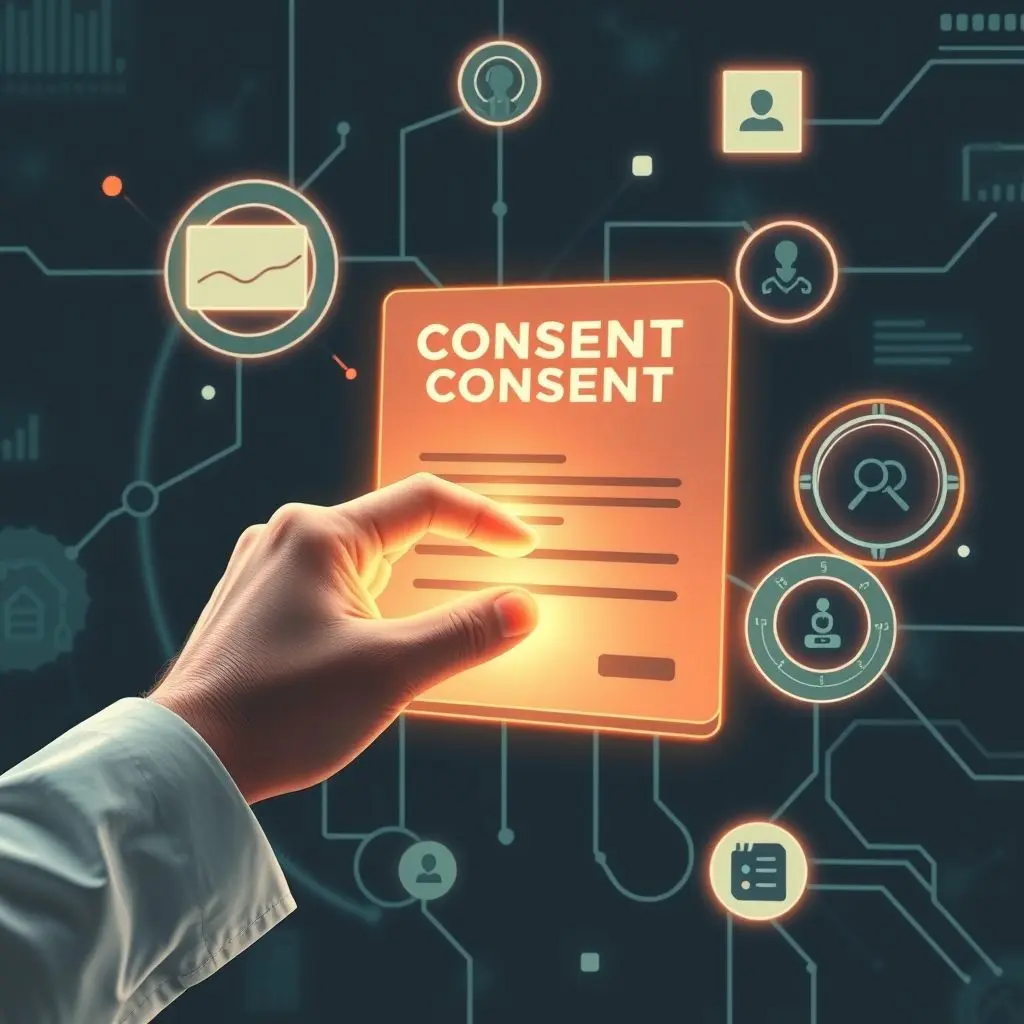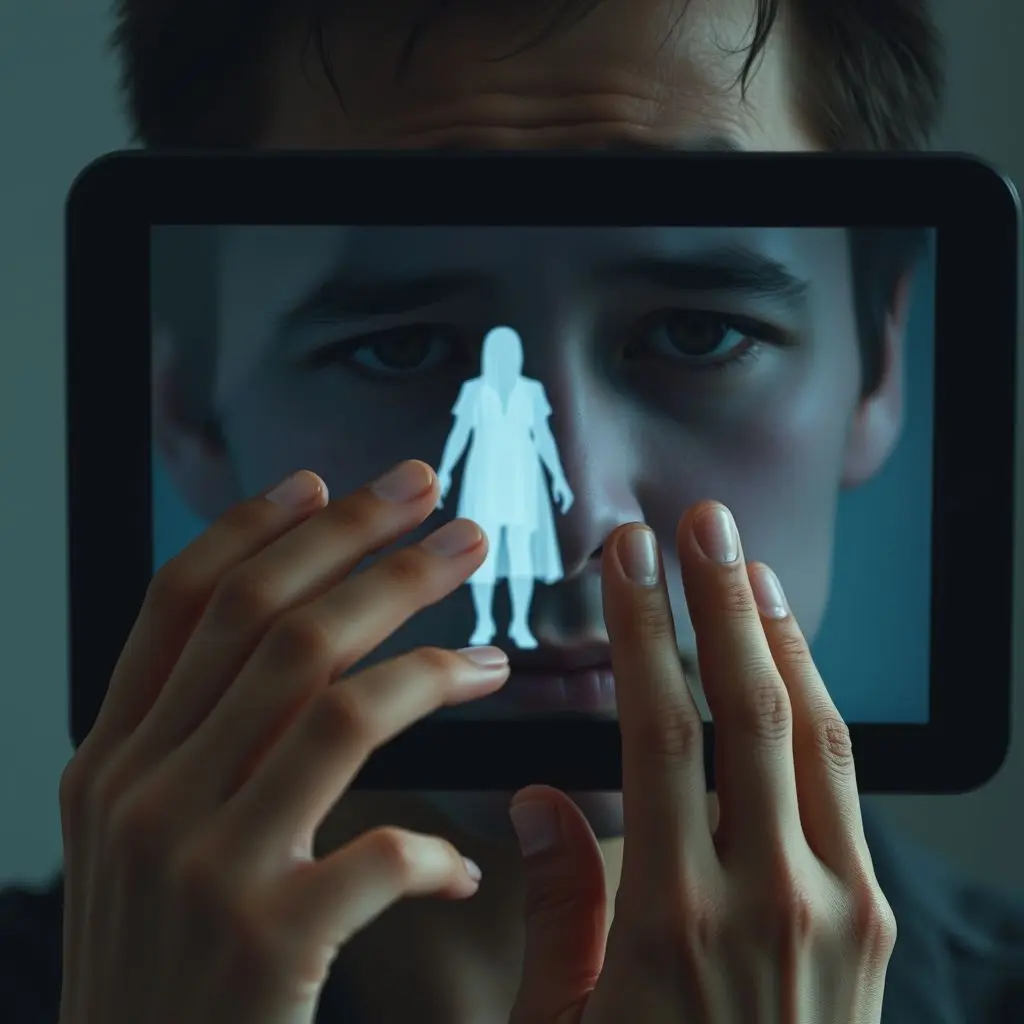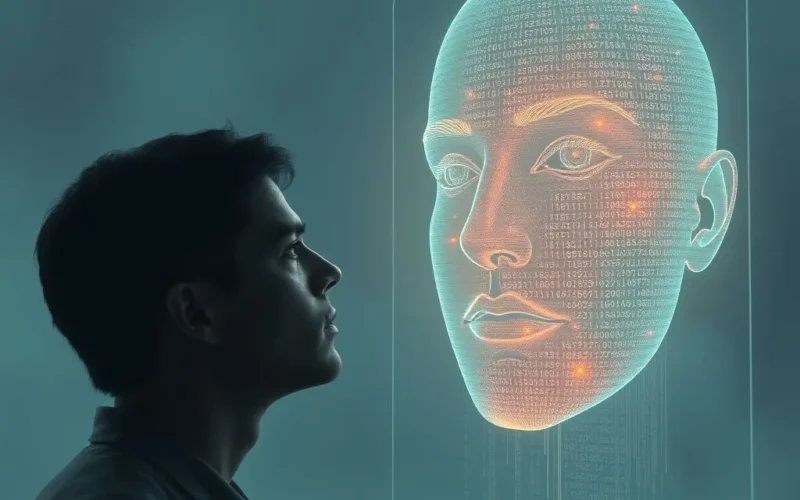Ever paused to ponder what unfolds when cutting-edge artificial intelligence confronts the raw, poignant reality of human grief? We’re not talking about mere digital photo albums or online tributes. We’re venturing into the realm of ‘eternal family’ chatbots – sophisticated digital constructs, meticulously trained on the life data of someone who has passed on, offering the living a chance to continue conversing with their AI ‘twin’.
It sounds like a narrative plucked straight from a speculative fiction novel, perhaps even a comforting balm for the grieving soul. Yet, beneath this seemingly benevolent surface lies a labyrinth of incredibly complex ethical quandaries. Questions immediately surface: Was explicit consent granted by the deceased to have their persona digitized and made perpetually available? What profound impact does this technology have on the delicate process of grieving – does it genuinely facilitate healing, or does it, perhaps, ensnare us in a simulated past?
Who holds the reins of control over this digital doppelganger, and what becomes of the vast trove of personal data it leverages? Is this truly a noble act of preservation, or might it subtly morph into a novel form of emotional exploitation? These are not trivial inquiries. They compel us to confront the very essence of human connection, memory, and loss in an increasingly digital landscape.
If these intricate tech topics tend to make your brain do a double-take, you’re not alone. To give you a concise glimpse into this mind-bending concept, check out our recent YouTube Shorts video below:
Table of Contents
The Enticing Promise and Stark Peril of Digital Immortality
The allure of an ‘eternal family’ chatbot is undeniable. For many, the idea of having an ongoing conversation with a loved one who is no longer physically present offers immense solace. Imagine asking your late grandparent for advice, or sharing daily updates with a departed sibling. This technology taps into a fundamental human desire: to defy the finality of death, to keep cherished memories not just alive, but interactive. It promises a form of digital continuity, a bridge across the chasm of loss.

However, this profound promise walks hand-in-hand with equally stark perils. While the comfort of a familiar ‘voice’ might seem a blessing, it raises critical questions about our relationship with reality, memory, and the very nature of healing. Are we truly interacting with our loved ones, or merely an algorithm’s sophisticated imitation? This distinction is not just philosophical; it has tangible implications for our emotional and psychological well-being.
The Cornerstone of Consent: A Digital Dilemma
Perhaps the most immediate and thorny ethical challenge revolves around consent. For an AI chatbot to effectively mimic a deceased individual, it requires access to a vast amount of their personal data: writings, voice recordings, social media posts, emails, and more. Did the person explicitly, unequivocally agree to have this data used to construct a perpetually interactive digital persona?
- Pre-Mortem Consent: Ideally, individuals would provide informed consent while alive, specifying how their digital legacy should be handled. This consent should be clear, revocable, and cover the specific intent of creating a conversational AI twin. But how many people consider this foresight today?
- Posthumous Rights: What happens if no such consent was given? Should family members have the right to digitize a loved one without their prior explicit approval? This ventures into complex territory concerning digital posthumous rights and raises concerns about potential exploitation of a person’s digital identity after their death.
- The Legal Vacuum: Currently, legal frameworks are largely unprepared for these scenarios. Laws concerning data privacy and intellectual property rarely extend to the nuanced concept of a digital ‘self’ created from aggregated personal data after death. This legal void creates significant ambiguity and potential for misuse.

Navigating Grief in the Digital Age: Healing or Stagnation?
Grief is a deeply personal and often agonizing journey, typically characterized by stages that involve acceptance, remembrance, and eventually, a degree of healthy detachment. The advent of AI chatbots mimicking the deceased fundamentally alters this landscape.
- Prolonging Attachment: Does continuous interaction with an AI twin impede the natural grieving process? Instead of gradually accepting loss and moving towards healthy remembrance, users might find themselves trapped in an endless loop of simulated conversation, unable to achieve closure.
- Authenticity vs. Illusion: The AI, no matter how sophisticated, is not the person. It’s an algorithm generating responses based on a dataset. Confusing this simulation with genuine presence could lead to a distorted perception of reality and hinder the crucial work of processing loss authentically.
- Digital Haunting: For some, the constant availability of a digital ghost might feel less like comfort and more like a perpetual haunting, preventing them from moving forward or finding peace. It could foster an unhealthy dependence on a digital construct rather than fostering resilience in the face of irreversible loss.

Custodianship and Control: Who Owns the Digital Ghost?
Beyond consent and grief, fundamental questions arise regarding the ownership and control of these digital echoes.
- Data Ownership: Who truly owns the vast collection of personal data used to train these AI models? Is it the deceased’s estate, the family, or the company providing the service? This data, representing a person’s digital identity, holds immense value and potential for misuse.
- Commercialization and Exploitation: Could these digital personas be commercialized? Imagine a scenario where a company decides to ‘lease’ access to a famous person’s AI twin, or where the data is repurposed for targeted advertising. This raises concerns about the commodification of grief and personal identity.
- Narrative Control: If the AI continues to learn and evolve, who steers its development? What if the digital twin starts expressing opinions or behaviors that the original person never would have, or that family members disagree with? The potential for a digital persona to deviate from the true identity, or be manipulated, is a significant ethical worry.

The Illusion of Presence: Authenticity and Identity
At its core, interacting with an ‘eternal family’ chatbot is an interaction with an algorithm. While incredibly sophisticated, capable of mimicking conversational patterns, tone, and even knowledge, it remains a simulation. This brings us to the profound questions of authenticity and identity.
- The Uncanny Valley of Emotion: As these AIs become more realistic, they risk falling into the ‘uncanny valley’ – a point where something is almost, but not quite, human, leading to feelings of revulsion or discomfort. This can be particularly pronounced when dealing with sensitive emotional connections.
- Defining Identity: Does our identity reside solely in our data and communication patterns, or is it something more profound – our consciousness, our unique lived experience, our capacity for genuine connection and growth? An AI can replicate the former, but arguably not the latter.
- Impact on the Living: For those left behind, mistaking the simulation for true presence could lead to emotional confusion, a blurring of lines between reality and algorithm-generated illusion, and a redefinition of what it means to be ‘present’ in memory.
Societal and Psychological Implications
The widespread adoption of such technology could ripple through society in unforeseen ways.
- Shifting Norms of Remembrance: How will we collectively remember the dead if they are perpetually ‘available’ for conversation? Will traditional rituals of mourning and remembrance evolve or diminish?
- Psychological Dependence: There’s a risk of developing a psychological dependence on these digital echoes, hindering individuals from moving forward with their lives or forming new, equally meaningful relationships.
- Redefining Death: In an extreme scenario, if digital immortality becomes widely accessible, it could fundamentally alter humanity’s perception of death itself, potentially diminishing its profound significance and the impetus for living fully in the present.

The Road Ahead: Regulation and Responsible Innovation
Given the ethical complexities, the path forward demands careful consideration and proactive measures:
- Ethical Guidelines and Legislation: Governments and international bodies need to develop robust legal frameworks addressing posthumous digital rights, data ownership for AI training, and clear guidelines for companies developing such technologies.
- Industry Self-Regulation: Tech companies must prioritize ethical design, transparency, and user well-being over purely commercial incentives. Clear terms of service, robust data security, and mechanisms for revoking access or deleting data are crucial.
- Public Discourse and Education: Open and widespread public discussion is vital to understand societal comfort levels, identify potential harms, and shape the future of this technology in a way that aligns with human values.
Frequently Asked Questions (FAQs)
What are ‘eternal family’ chatbots?
‘Eternal family’ chatbots are AI programs designed to mimic the conversational style, knowledge, and persona of a deceased individual. They are trained on extensive personal data (texts, emails, voice recordings, social media posts) to allow surviving loved ones to continue interacting with a digital representation of the deceased.
How do these chatbots work?
These chatbots utilize advanced Natural Language Processing (NLP) and machine learning algorithms. They ingest and analyze a person’s digital footprint – their written and spoken words – to learn their unique linguistic patterns, knowledge base, and even emotional expressions. When a user inputs a query, the AI generates a response that attempts to sound as if it came from the deceased individual.
What are the main ethical concerns surrounding these AI chatbots?
Key ethical concerns include: lack of explicit consent from the deceased; potential for hindering or complicating the natural grieving process; issues of data ownership, control, and commercial exploitation of a person’s digital identity; and the psychological implications of interacting with a simulated presence.
Can someone consent to this technology before they die?
Ideally, yes. For ethical deployment, individuals should be able to provide clear, informed, and revocable consent while they are alive, outlining how their digital data can be used for such purposes after their death. Without pre-mortem consent, the ethical implications become significantly more complex.
Does interacting with these chatbots help or hinder grief?
The impact on grief is a subject of intense debate. While some argue it could offer comfort and a continuous connection, others worry it might impede the necessary process of acceptance and detachment, potentially trapping individuals in prolonged mourning or an unhealthy reliance on a simulated presence.
Who owns the data used to train these chatbots?
Data ownership is a murky area. It could involve the deceased’s estate, the surviving family, or the technology company that developed the chatbot. This question is particularly complex given the personal nature of the data and the potential for its commercial use or misuse.
Beyond the Horizon
The emergence of AI chatbots that mimic the dead presents a profound intersection of technology, humanity, and our deepest emotions. It compels us to wrestle with fundamental questions about life, death, memory, and what it truly means to be human in an age of ever-advancing AI. As these technologies evolve, our collective wisdom, ethical foresight, and compassionate understanding will be paramount. We must strive to ensure that innovation serves to genuinely enrich human experience, offering solace without inadvertently creating new forms of distress or exploitation. The conversation has only just begun.




